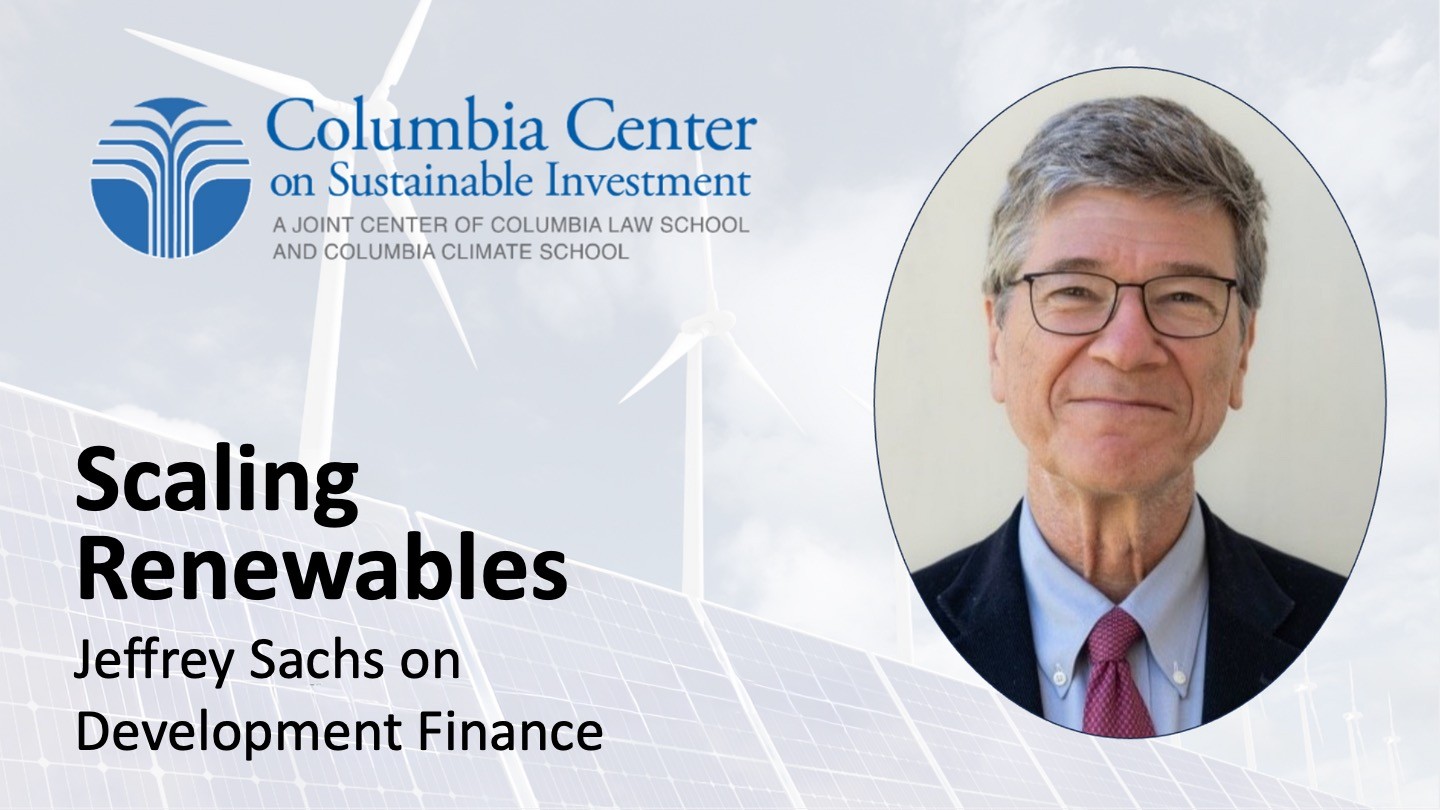Scaling Renewables: Jeffrey Sachs on Development Finance
In the fourth expert interview related to CCSI’s work on scaling renewable energy investment, we interviewed Jeffrey Sachs to understand and address the challenges facing developing countries in financing investment in renewable energy generation. Jeffrey Sachs is a world-renowned economics professor, bestselling author, innovative educator, and global leader in sustainable development. He is the director of the Center for Sustainable Development at Columbia University and is the President of the UN Sustainable Development Solutions Network.
What are the main challenges for developing countries to finance investment in renewable energy generation?
The main problem is that developing countries pay exceptionally high interest rates on their borrowing, and often are able to borrow only at short maturities, if at all. Of the 82 low-income countries (LICs) and lower-middle-income countries (LMICs), only 3 have an investment-grade credit rating (India, Indonesia, and the Philippines). All the rest of the LICs and LMICs pay the penalty rates that face sub-investment-grade borrowers. Private-sector borrowers in these countries are subject to the so-called “sovereign ceiling,” meaning that they can borrow on no better terms than the government.
What types of financial instruments and conditions are ideal to finance investment in renewables in developing countries?
These countries need financing mainly from official sources, especially Multilateral Development Banks (MDBs). The core idea of MDB financing is that the MDBs can borrow on the capital markets on much better terms than the countries to which they lend. The MDBs can therefore on-lend to the borrowing countries on investment-grade terms. In principle, they can do this for three reasons:
- MDBs can help borrowing countries to design and implement effective public investment strategies.
- MDBs enjoy “preferred creditor status” in the event that the borrowing country faces debt-service problems.
- MDBs have the cushion of the capital contributed by their owners, mainly the high-income countries (HICs). They can leverage the paid-in capital several times by borrowing against it, while maintaining their strong credit rating.
How can international and national public financial institutions help increase access to low-cost finance for investment in renewables in developing countries?
MDB financing in total currently runs about USD 100 billion per year in disbursements from the MDBs combined (World Bank, Inter-American Development Bank, African Development Bank, Asian Development Bank, Asia Infrastructure Investment Bank, New Development Bank, Islamic Development Bank, and other smaller MDBs). This should be increased to at least USD 600 billion per year within the next few years, that is, an increment of USD 500 billion per year, or 0.5% of world GDP. If the HICs plus China were to pay in new capital at a rate of USD 100 billion per year, roughly equal to 0.125% of their combined GDP, the MDBs could thereby increase annual lending by around USD 500 billion per year, based on a leverage of five times paid-in capital.
And what is the role of private financial institutions?
There are two main roles of the private financial institutions. The first is to buy the bonds of the MDBs. That is a huge role. The second is to co-finance the new investment plans of the LICs and LMICs alongside the scaled-up financing of the MDBs. This is “blended financing,” which can be expanded enormously—if the MDBs take the lead.
How does the work of the Sustainable Development Solutions Network (SDSN) contribute to scaling investment in renewable energy?
SDSN is working with governments and the UN system to design investment pathways to net-zero energy systems and building macroeconomic models to show the long-term sustainability of greatly increased development finance. SDSN’s main theme is that we need an “SDG Stimulus,” led by the MDBs, to enable the poorer half of the world’s population to achieve the SDGs and the objective of the Paris Agreement on climate change.
To read the other expert interviews in the Scaling Renewables series and CCSI's reports on scaling investment in renewable energy, visit our project page.

